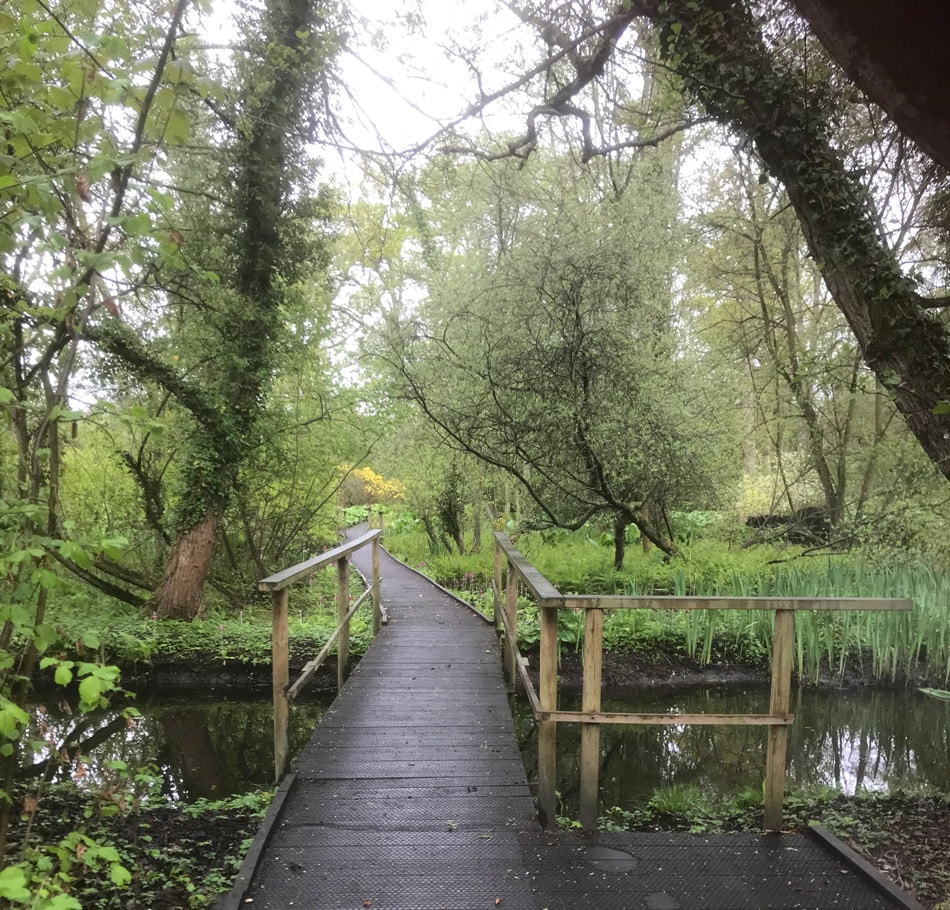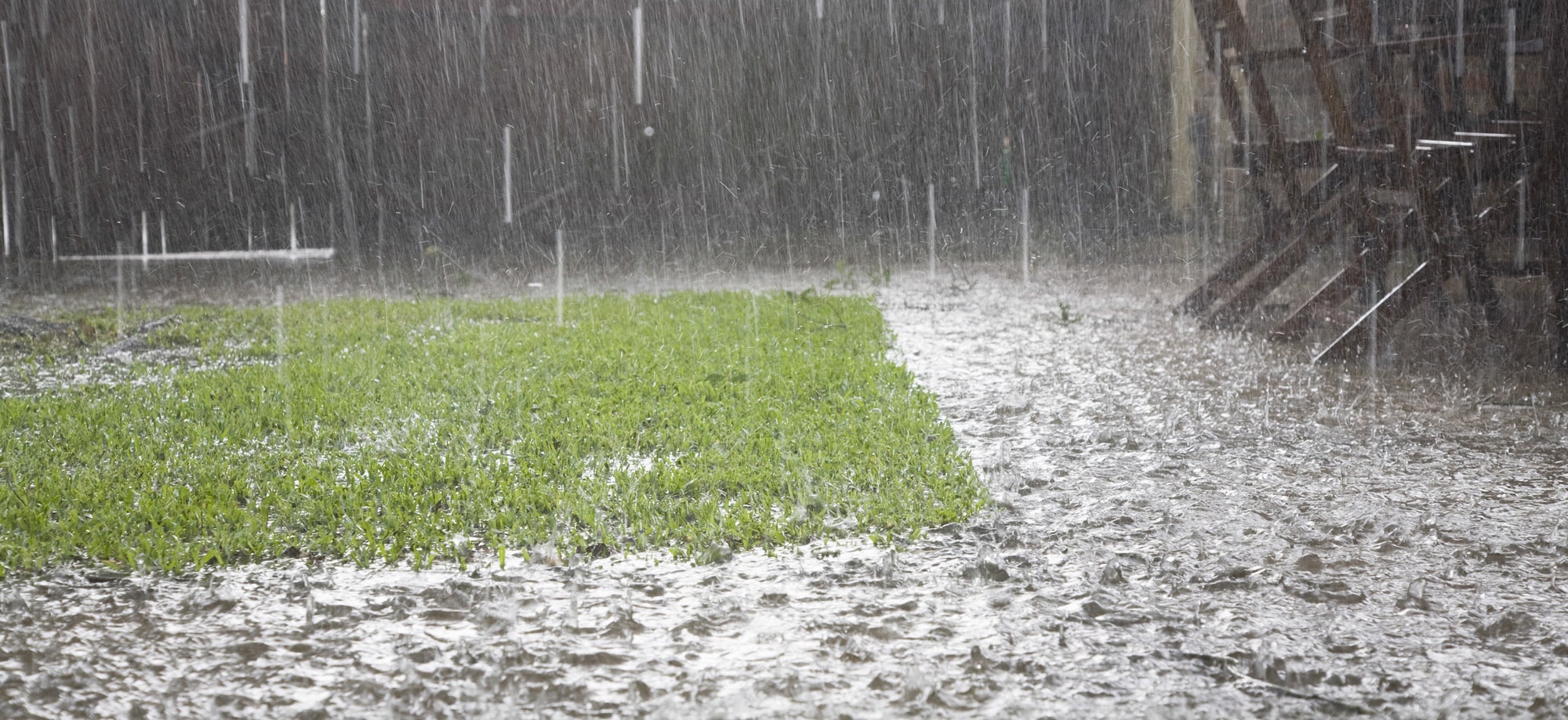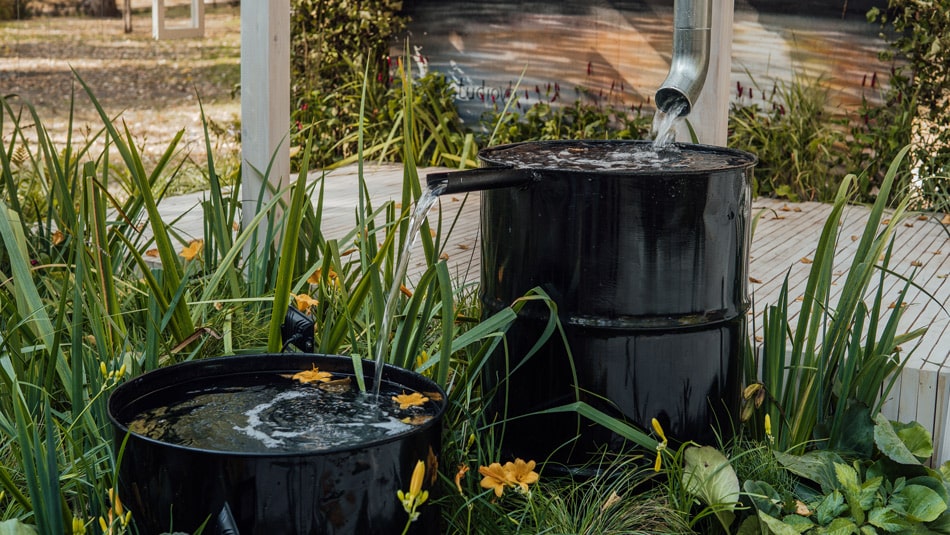11 Jan How to make the most of a wet garden
Is your garden too wet to use at some times of the year? In this article, we’re discussing ways to make the most of a wet garden.
There’s nothing more frustrating than having parts of your garden rendered unusable because they are simply too wet underfoot. There are, however, several landscaping tricks that can help to ease the problem.
What is making your garden wet?
The first step in solving any problem is knowing exactly what you are dealing with. Why is your garden wet? Does your garden have a high water table, or is it simply a case that the soil is badly drained?
One way of diagnosing the problem is to dig an inspection pit – if you have a large garden you might want to do this in two or three different places.
Dig a straight-sided hole around 60cm deep. Cover it so that no rain can get in, and leave it overnight. If in the morning there is water at the bottom of the hole, you have a high water table.
If there is no water, fill the pit with water from a hosepipe. Again, cover the hole and leave it for 24 hours. If water remains after this time, your soil is probably poorly drained.
Please bear in mind that the results from this test will vary according to the ambient weather patterns at the time. If it’s been raining for weeks, the water table will of course be higher than normal and soil will be saturated and therefore slow to drain.
Your inspection pit will also give you an opportunity to get to know the soil in your garden. How easy was it to dig? If the soil is compacted, digging it over may improve the drainage. Look for a nice deep layer of topsoil (dark brown) with plant roots clearly visible. Beneath the topsoil will be a layer of subsoil – if the topsoil layer is thin or the subsoil is hard bedrock or thick clay, no amount of digging will help the drainage. You need ideas and help from a professional landscaper.
Adjusting the drainage in your garden
Whenever you hope to get rid of the wet spots in your garden, your first port of call should be to talk to a landscaper or a garden designer. It could be that a solution can be found quite easily – perhaps you need to adjust the levels in your garden, put in a soakaway system, or simply unblock existing drains.
However, redirecting water away from your garden could get you into trouble by impacting neighbouring plots or on municipal drainage systems. Always consult a professional landscaper – someone with good knowledge of local planning requirements. Someone who won’t cause more problems than they cure.
Improve the soil structure
Working as we do, in Essex, Suffolk, and London, Holland Landscapes are only too familiar with the challenges of poorly drained clay soil. It’s sticky in wet weather and dries to a hard crust during dry spells.
Adding organic matter to clay soil really does help to improve drainage over time. Clay soil has minuscule particles that stick together with very little space for water molecules to run between them. Adding compost, well-rotted manure, bark fines, or even topsoil, opens up the soil structure so that air and water can circulate more easily. Adding organic matter and managing soil carefully, also supports the minibeasts and microbes that help create a well-drained growing medium.
If you dug an inspection pit to learn more about your garden soil structure (paragraph 1) and found builders’ rubble – you are not alone. This is a common problem, especially in newbuild properties. Your landscaper will be able to advise you on the practicalities of replacing the rubble with decent topsoil.
Collect and store rainwater
Collecting rainwater can become a beautiful garden feature. How would you adapt this to suit the style of your garden?
When rainwater gushes off hard landscaping features and garden structures it can quickly turn a wet garden into a quagmire.
As our climate changes, we can expect to see wetter winters and drier summers. So why not get strategic? You could collect and store rainwater to use in the garden during the summer. By doing so, you’ll be reducing the amount of water that your garden needs to soak up during rainstorms and showers. Why not collect rainwater runoff from Garden sheds, greenhouses, pergolas, paths, and patios store it in water butts or even a dipping pond.
Take a look at this example of a National Trust Garden in Worcestershire where landscapers have created a very useable water recycling system. Learn about Croome Walled Gardens Dipping Pond
Introduce living roofs
Still on the subject of reducing rainwater runoff to relieve the problem of a wet garden – how about living roofs? A living roof, or green roof, absorbs up to 80% of the rainwater that falls on it and releases it slowly back into the atmosphere or into a drainage system. In short, it slows down the deluge and, depending on the size and specification of the roof, can make a considerable difference.
Discover more about green roofs here
Build a rain garden
A rain garden is a wonderful thing. It embraces all of the vagaries of the British weather and uses them to create a fascinating (and low maintenance) garden feature. Clever landscaping diverts rainwater to an area of the garden where the water can gradually seep into the soil without soaking the whole of the garden. Careful planting also helps to absorb the excess water and will make the area more attractive. Of course, you need to choose plants that cope well with soggy AND dry conditions. But once you start researching, you’ll find that there are plenty of choices out there.
Read more about rain gardens here
Use landscaping features to improve access

This is Fairhaven woodland and water garden in Norfolk.
The owners have embraced the ecology of the site and built boardwalks so that they can enjoy the garden without changing its character.
If your budget doesn’t extend to drainage works – or if you are curtailed by planning restrictions, the best way to make the most of a wet garden is to make a feature of it. Build some raised paths or decks that allow you to access garden features without sloshing through puddles.
You will of course need to think carefully about the construction, again that’s where it’s important to ask an experienced landscaper to carry out the work.





Sorry, the comment form is closed at this time.